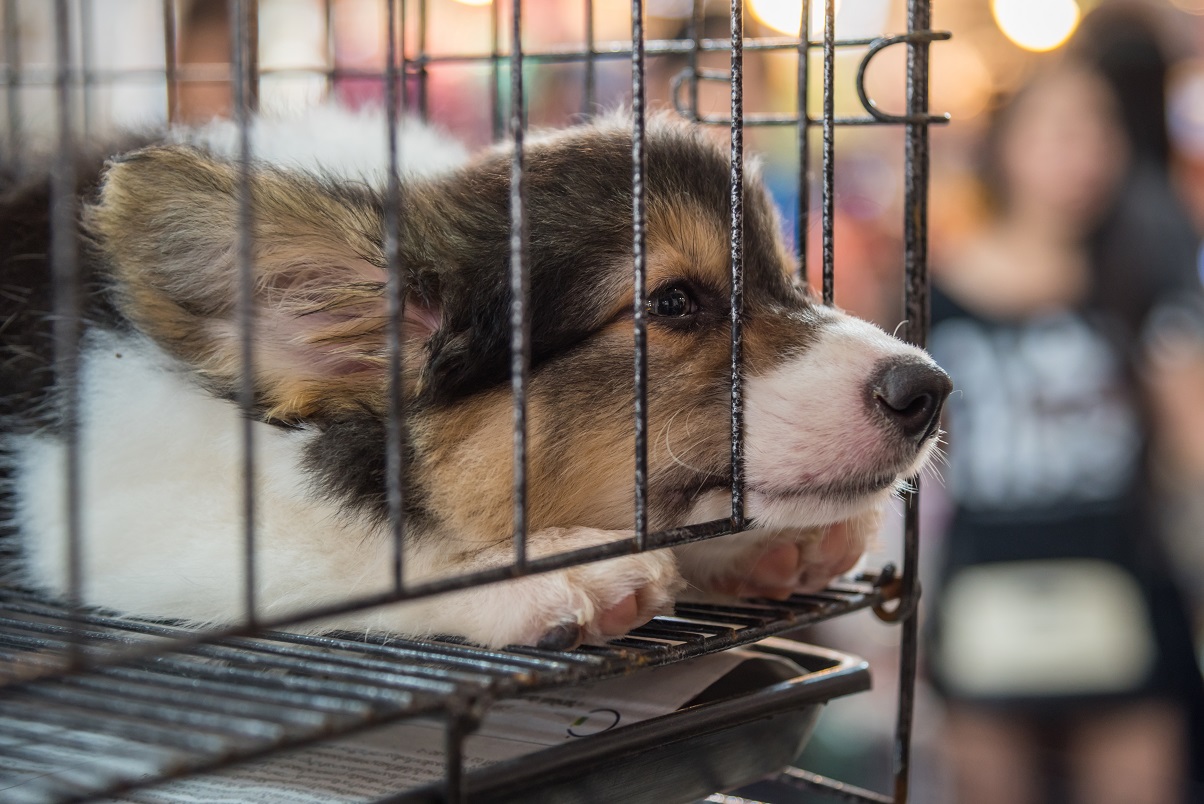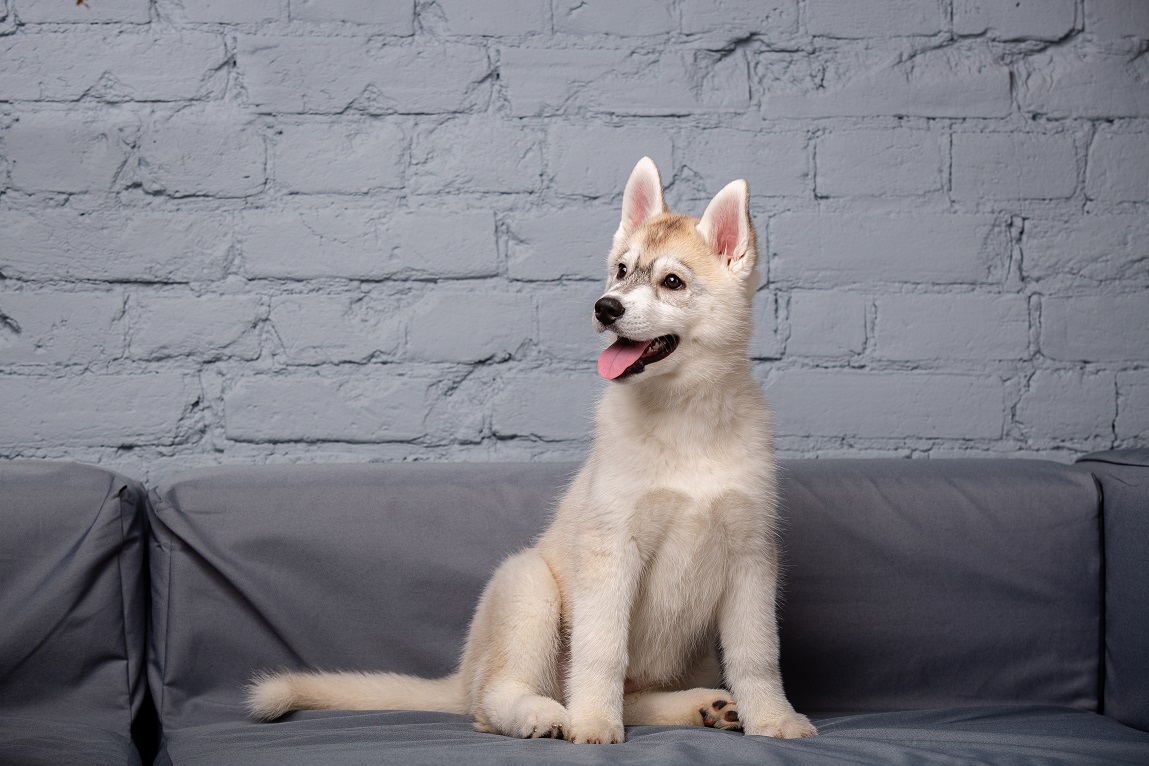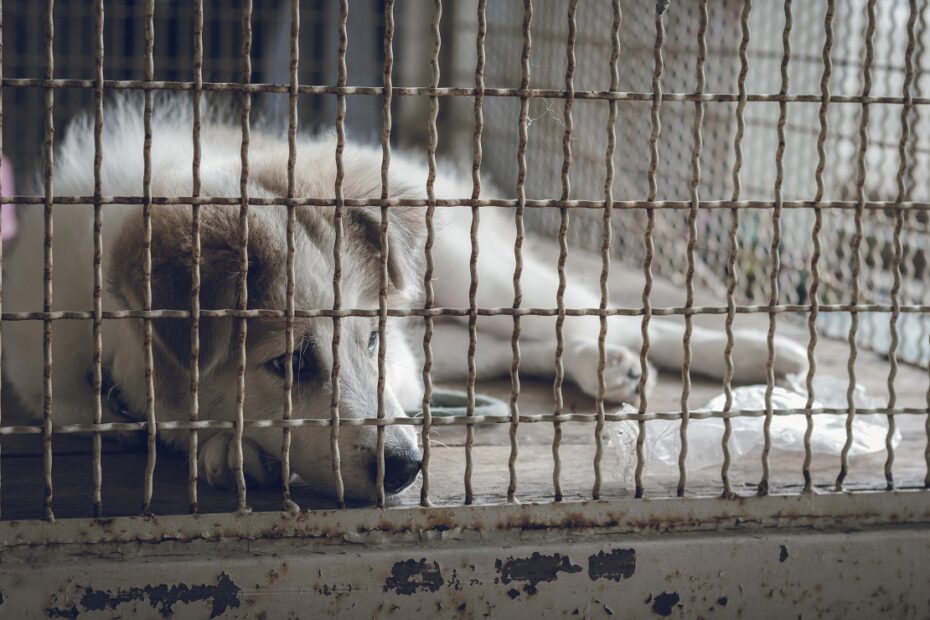True story… A few years back, I dealt with a client who had an all too familiar issue with their dog destroying the crate.
And when I say destroys, I’m talking about blankets ripped, toys broken, and the frequent odor of urine on the sheets to top it all of.
And while I’ll admit that this is an extreme example, it’s still something that many owners are having issues with on a day-to-day basis.
Now, the first step to handling an issue like this is figuring out the root cause of the behavior. Because if you can determine why it’s happening in the first place, you’ll be in a much better position to deal with it effectively.
You really need to consider all the options here aswell.
Sometimes, it could be a simple case of your dogs acting out because you forgot to take them to the bathroom before leaving them in the crate for hours on end. And they’re kicking up a huge fuss because they need to go potty.
Other times, it can be a lot harder to explain. And you’re going to have to do a little detective work before coming up with exactly why your dog is acting out.
But if there’s one thing that’s certain, it’s that a calm dog is a happy dog. So regardless of why your dog is destroying the crate. Teaching them how to be in full control over their emotional state will help you get to the bottom of the issue sooner rather than later.
So how do you do this exactly?
Well, the first thing I’d recommend is taking a look at the 5 step-by-step calming exercises from Dan Abdelnoor over at The Online Dog Trainer to set yourself up for success. (see video below)
Because while most dog training methods teach outdated, highly ineffective training techniques.
Over the years, Dan has helped tens of thousands of frustrated dog owners effectively deal with a multitude of doggy behavioral issues like barking, aggression, and yes… even crate training.
Just to give you a little more insight, these 5 specific exercises the core of what Dan teaches over at his website.
And while they’re only a small slice of what’s on offer, used consistently, they’ll form the foundation for a well-behaved, obedient dog that’s highly responsive and calm.
Anyway, here’s the video link to take a look: 5 Step-By-Step Calming Exercise To Make Your Dog Highly Responsive, Obedient & Calm…
(video will open in a new window)
Why Is My Dog Destroying The Crate?
Now, the obvious reason your dog destroys the crate is that they want to get out.
Problem solved, right?
Not so fast…
Because even though most dogs destroy the crate as a sign of craving freedom, the reason why they do it can differ greatly.
Some of the more common reasons include…
Separation Anxiety
It’s important to note that a dog with separation anxiety will react very differently from a dog that simply wants to be let out of the crate because they’re bored.
And though signs of separation anxiety can differ, dogs displaying this condition inside the crate typically include more persistent barking, frantic pacing, and a constant struggle to escape from confinement.
Heavy panting and excessive drolling are also clear indicators that your dog is suffering from this condition.
You may even notice a great deal of shaking while they’re inside, so if you spot any of these signs, get them out of the crate ASAP. And whatever you do, don’t let them back in until they’re ready.
Separation anxiety can be a nightmare to deal with at times. And it’ll often take weeks (possible months) to reverse any damage and get them back to their old self.
I’ll be covering how to better deal with this issue a little further down the page, but for now, just take my word for it and let them keep their distance from the crate.
The Crate Is Too Small
It sounds obvious, but the crate should be a place of pure comfort and relaxation for your dog.
However, it still surprises me how many owners tend to get things wrong when it comes to picking out the correct size crate for their loveable pooch.
In short, your dogs’ crate should be big enough so they can stand up and turn around comfortably. And long enough so they can have a good old stretch when the occasion calls for it.
Any smaller and you’ll be doing your dog a massive disservice by not giving them adequate room to move.
It’s also important to note that the crate shouldn’t be too big either, as having more room than needed will likely turn one corner of the crate into an unwanted pottying area.
As a general rule, dogs won’t soil where they sleep. But give them enough room, and they’ll gladly take the opportunity to download on your nice clean floor.
Related Post: 4 Ways To Stop Your Puppy Whining In The Crate – The Quick & Easy Way

They Need The Bathroom
Although adult dogs can hold their pee for anywhere up to 12 hours. This doesn’t necessarily mean that it’s a good idea to leave it until the last minute.
So if you’re usually calm dog has started acting out by destroying the crate, then a quick bathroom break could be just what the doctor ordered.
Ideally, you should always allow them to relieve themselves anyway before locking them up in the crate, as it will put your mind at rest that they won’t start trying to break down the door the moment you step out of the room.
Pent Up Energy/Lack Of Exercise
Some dogs will happily fritter their time away snoozing in their nice warm crate…
…Others, not so much.
Obviously, this is going to depend on the breed of pooch, as naturally high-energy dogs like border collies will need a lot more physical and mental exercise before they’re ready to head to the crate and settle down.
So if your idea of daily exercise for your dog is a two-minute game of fetch and a hundred yards dash on the treadmill. Then you’re going to have to seriously rethink your gameplan.
Too Much Time In The Crate
Imagine being confined to your room for hours on end with nothing but a bed and four walls to stare at.
Doesn’t sound appealing, does it?
See, although dogs love a little chill time to unwind and relax. Too much is likely to send them stir crazy.
And what better way to pass the time by destroying anything and everything they can get their paws on.
Now, as a rule of thumb, adult dogs shouldn’t spend any more than 6-8 hours in a crate. And this should only be in rare circumstances when you’re not able to be there. (or when it’s nighttime)
Any more can have a huge effect on their mental wellbeing, often causing a series of behavioral issues to rear their ugly head.
Negative Associations With The Crate
Previous past experiences can have a big impact on what your dog will and won’t do.
So if you’re dog has had any negative experience with the crate (no matter how small), this could be causing them to act out and tear the place apart.
Usually, this is something you should be able to pick up on quickly as any negative associations will like cause your dog will refuse to go in the crate altogether…
…Let alone have enough time to destroy it.
But it’s an issue nonetheless that needs to be considered carefully before jumping to any conclusions.
WATCH VIDEO: 5 Step-By-Step Calming Exercises To Make Your Dog Highly Responsive, Obedient & Calm…
(video will open in a new window)
How To Stop Your Dog Destroying The Crate
Stopping your dog from destroying the crate can be a challenging task. But it’s by no means a lost cause if you’re willing to put aside a little time and work at it.
Again, figuring out the root cause is always going to put you one step ahead of the game by giving you a starting point to work from when it comes to getting your dog to remain calm and in control.
But whatever the issue, take a few minutes to consider the following to get your dog’s behavior back on track…
Take Care Of Their Needs
First things first, do everything in your conceivable power to make sure all of your dog’s needs are met before closing the crate door behind them.
So consider the following…
- Have they been fed… Check!
- Have they been to the bathroom… Check!
- Is the crate big enough to meet their needs… Check!
- Is the temperature in the room OK (not too hot or cold)… Check!
- Is the crate comfortable, with soft blankets and a few toys to keep them entertained… Check!
See, by taking care of ALL of your dog’s needs before they head into the crate. You’re ultimately taking away a huge chunk of guesswork when it comes to figuring out what’s causing their destructive habits.
If there’s still an issue, it’s time to dig a little deeper into your investigation…
Counter-Conditioning
Counter conditioning is basically the concept of replacing any negative association your dog has with the crate with newer, more positive associations.
You might have to backtrack a little here is this usually involves going back to basics and reintroducing your dog to the crate altogether.
This might sound like a pain, but the alternative (shoving them in the crate and hoping for the best) simply isn’t going to cut it if you want to solve the issue long term.
To get started, you’ll need a bag of your dog’s preferred treats or snacks. And preferably an hour or more to get some serious groundwork done on the issue.
Anyway, here’s what you need to do…
With the crate open, sit close by and call your dog into the room or entice them with tasty treats.
Allow them to roam for 5 minutes or so and occasionally toss a treat close to the entrance of the crate.
The idea here is to just get them used to good things happening both in and around the crate. So they can start to develop associations whenever they’re in that specific location.
After a little more time (preferably 10-15 minutes or so), start tossing the occasional treat into the crate itself to see if your dog goes for it.
If they do, great stuff. You can go ahead and reward them with positive praise and attention.
If they don’t, however, simply cut your losses for the day and try again tomorrow.
It can take several attempts for your dog to start to feel more comfortable both in and around the crate. But I guarantee that if you give it time, they’ll eventually start to poke their head inside to see what all the fuss is about.
Teach Them To Be Calm
In addition to counterconditioning, teaching your dog how to become calm and in control of their emotions is a sure-fire way to get them effortlessly wandering in and out of the crate successfully.
Again, it all starts by implementing those 5 calming exercises I was talking about earlier.
To do it, simply set yourself up somewhere near the crate and call your dog in like before. Remember that bag of treats aswell as they’ll give your dog that little extra incentive to hop inside the crate when the time comes.
Then go ahead and run through the 5 step-by-step calming exercises until your confident your dog is in a highly responsive (non-emotional) state.
Once this happens, take another shot at tossing a treat inside the crate to see if your dog goes for it. If they do, scootch a little closer and make an attempt to hand feed your dog one or two more treats while inside the crate.
Again, this can be a time-consuming process. But by combining the power of both calm and positive association. You’re essentially giving your dog a double whammy of feel-good vibes that will stay with them the next time they enter the crate.
And while you won’t see results overnight, they’ll eventually develop positive associations within the crate that will last a lifetime.
Related Post: How To Plan An Effective Crate Training Schedule For A Puppy

Wrapping Things Up
Now, hopefully, this has given you a little food for thought when it comes to permanently eliminating destructive habits in the crate.
Like anything though, don’t expect overnight miracles and don’t force your dog to do anything they don’t feel comfortable with.
But with a little time, patience, and, more importantly, consistency, you should start to see a marked improvement in your dogs’ behavior for the better.

